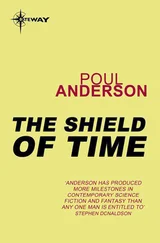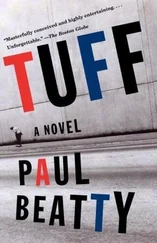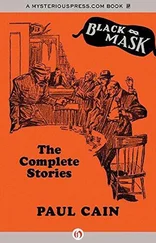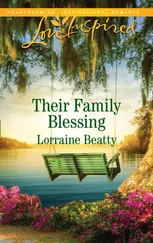The kids couldn’t tell whether he was joking or just ranting, but they laughed anyway, each finding something funny in his expressions, his inflections, the cognitive dissonance in hearing the word “nigger” coming from the mouth of a man as old as the slur itself. Most of them had never seen his work. They just knew he was a star. That’s the beauty of minstrelsy — its timelessness. The soothing foreverness in the languid bojangle of his limbs, the rhythm of his juba, the sublime profundity of his jive as he ushered the kids into the farm, retelling his joke in Spanish to an uncaptive audience running past him, cups and thermoses in hand, scattering the damn chickens.
Un negrito está en la cocina mirando a su mamá freír un poco de pollo … ¡Aprendí que he sido blanco por solo diez minutos y ya los odio a ustedes mayates!
They say breakfast is the most important meal of the day, and for some of those kids it might be their only meal, so in addition to the milk, I offered, children and adults alike, a fresh satsuma mandarin. I used to hand out candy canes and horsy rides on the first day of school. Mount them three to a saddle and pony the little shits to campus. Not anymore. Not when two years ago, the sixth-grader Cipriano “Candy” Martínez, a half-Salvadoran, half-black boy who lived over on Prescott Place, tried to Lone Ranger and Hi-yo, Silver! Away! his ass out of an abusive household. Following the steaming piles of horseshit, I had to go all the way to Panorama City to track him down.
I picked up two kids straying near the stalls by their elbows and hoisted them into the air.
“Stay away from the fucking horses!”
“What about the orange tree, mister?”
Unable to resist the enticing smell of the satsumas and hold off until recess or the soap operas for their midday snacks, my customers were huddled under the mandarin tree, guiltily standing in piles of peeled skin, their lips wet with fructose.
“Take as many as you want,” I said.
My father used to say, “Give a nigger an inch and he’ll take an ell.” I never knew what an “ell” was, but in this case it meant the stripping of my precious satsuma tree bare. Hominy, holding his lumpy stomach in both hands because he was five months’ pregnant with about twenty citrus fruit babies, ambled up to me.
“These greedy niggers gon to take all your oranges, massa!”
“That’s all right, I only need a couple.”
And to prove my point, a plump blue-ribbon satsuma, trying its best to escape the feeding frenzy, rolled right up to my feet.
* * *
An ebullient Hominy, with sun on his face and the sweet taste of satsumas on his minstrel-pink tongue, pied-pipered the children to their dooms. Followed by their doting, overprotective parents and me, the biggest rat of them all, bringing up the rear. Kristina Davis, a tall little girl, whose lanky bones and white teeth owed their growth and strength to years of consumption of my unpasteurized milk, sidled up to me and clasped my hand with a solid grip.
“Where’s your mother?” I asked.
Kristina put her fingers to her lips and inhaled.
In neighborhoods like Dickens, before concerned parents with secret service earpieces stuffed into their auditory canals marshaled your every move, you used to learn more on your way to and from school than you did in school. My father was aware of this, and to further my extracurricular education, every so often he’d drop me off in a strange neighborhood and make me walk to the local place of learning. It was a lesson in social orienteering, except that I didn’t have a map, a compass, a mess kit, or a slang-to-slang dictionary. Thankfully, for the most part, in L.A. County you can gauge the threat level of a community by the color of its street signs. In Los Angeles proper the signs are a hollowed-out metallic midnight blue. If a bird’s nest constructed of pine needles was tucked inside the sign, it meant evergreen trees and a nearby golf course. Mostly white public-school kids whose parents lived above their means in upper-middle-class neighborhoods like Cheviot Hills, Silver Lake, and the Palisades. Bullet holes and a stolen car wrapped around the post signified kids about my hair texture, allowance level, and clothing style in neighborhoods like Watts, Boyle Heights, and Highland Park. Sky blue signified kickback cool bedroom communities like Santa Monica, Rancho Palos Verdes, and Manhattan Beach. Chill dudes commuting to school by any means necessary from skateboard to hang glider, the goodbye lipstick prints from their trophy-wife mothers still on their cheeks. Carson, Hawthorne, Culver City, South Gate, and Torrance are all designated by a working-class cactus green; there the little homies are independent, familiar, and multilingual. Fluent in Hispanic, black, and Samoan gang signs. In Hermosa Beach, La Mirada, and Duarte the street signs are the bland brown of cheap blended malt whiskey. The boys and girls mope their way to school, depressed and drowsy, past the hacienda-style tract housing. The sparkling white signs denote Beverly Hills, of course. Exceedingly wide hilly streets lined with rich kids unthreatened by my appearance. Assuming that if I was there I belonged. Asking me about the tension of my tennis racquets. Schooling me on the blues, the history of hip-hop, Rastafarianism, the Coptic Church, jazz, gospel, and the myriad of ways in which a sweet potato can be prepared.
I wanted to release Kristina into the wild. Urge her to take the most circuitous route to school possible. Let her run unchaperoned under the jet-black street signs of Dickens and take an honors class in snail trails. Audit a seminar in watching your friend walk into Bob’s Big Boy and steal the breakfast tips from the counter. Formulate an independent study on the poetics of the rainbows in sprinkler water and the call of the early-bird-purple-sequined halter-top-prostitute caterwauling to potential johns on Long Beach Boulevard. I was about to let Kristina loose, but we’d reached the school just as the nine o’clock bell rang.
“Hurry up, you’re going to be late.”
“Everybody’s already late,” she said, running off to join her friends.
Everyone was late. Students, staff, faculty, parents, legal guardians, all were congregated in front of Chaff Middle School, ignoring the bell and taking the measure of their newly minted crosstown rivals from across the street.
The Wheaton Academy Charter Magnet School of the Arts, Science, Humanities, Business, Fashion, and Everything Else was a sleek, state-of-the-art plate-glass building that looked more like a death star than a place of learning. Its student body was white and larger-than-life. None of this was real, of course, as the Wheaton Academy was a phony construction site. A vacant lot now, surrounded by a plywood fence painted blue, with small rectangle cutouts through which passersby could watch building that would never take place. The school was nothing more than a five-by-five watercolor artist’s rendition of the Center of Marine Sciences at the University of Eastern Maine that I downloaded, had blown up, mounted under plastic, and attached to a gate bolted with a chain lock. The pupils were ballet dancers, platform divers, violinists, fencers, volleyball players, and pottery makers whose black-and-white photos I hijacked from the Intersection Academy and Haverford-Meadowbrook websites, had enlarged, and pasted onto the fence. If anyone had been paying attention, they would’ve noticed that in reality the Wheaton Academy would be ten times the size of the lot it was supposed to be built upon. But if the red letters stenciled underneath the drawing were to be believed, then by all indications the Wheaton Academy was indeed “Coming Soon!”
Not soon enough for Dickens, of course, whose concerned but suspicious parents, eager for their children to join the ranks of the giant Anglo kids, whose metal braces brightened not only their impossibly white smiles but their futures. An overzealous mother, pointing demonstrably at a studious child and an attentive teacher poring over the results of a spectrograph pointed at the stars, asked Charisma the question on everyone’s mind.
Читать дальше












